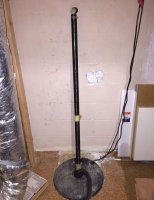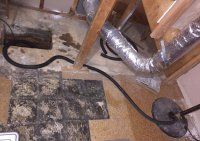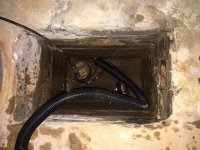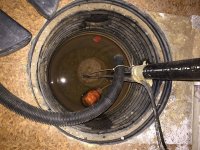PRice
New Member
- Messages
- 4
- Reaction score
- 0
- Points
- 1
I bought an older house that has a finished basement. There is a mechanical room in the basement with 2 sump pump basins, each with a pump, 5 feet from each other. Pump A is closer to the center of the house, pump B is near the basement wall.
Currently Pump A discharges into Pump B. Pump B discharges underground to the curb on my street (with no backflow valve). Interesting (and not great) setup!
Anyway, the pipe going from Pump A to Pump B is the cheap flexible hose and it split near the output on Pump A. That got me thinking that I need to read more about piping and make improvements.
A week later the float on Sump Pump A failed so the pump runs all the time. I unplugged the pump for now and simply plug it back in each night if the water is high. That got me thinking about replacement pumps. I'm not sure how old the pumps are.
Sump pump A is in a rectangular concrete hole that is 11"x 20". Sump B is in a 15" round basin.
I'd like to purchase a system with battery backup for power outages, but I'm not sure of the best setup.
Should I buy 2 battery backup pumps and keep the same setup as today (Pump A goes to Pump B)?
Or should both pumps discharge independently through the same outside pipe?
Any other advice or tips before I make a plan?
Currently Pump A discharges into Pump B. Pump B discharges underground to the curb on my street (with no backflow valve). Interesting (and not great) setup!
Anyway, the pipe going from Pump A to Pump B is the cheap flexible hose and it split near the output on Pump A. That got me thinking that I need to read more about piping and make improvements.
A week later the float on Sump Pump A failed so the pump runs all the time. I unplugged the pump for now and simply plug it back in each night if the water is high. That got me thinking about replacement pumps. I'm not sure how old the pumps are.
Sump pump A is in a rectangular concrete hole that is 11"x 20". Sump B is in a 15" round basin.
I'd like to purchase a system with battery backup for power outages, but I'm not sure of the best setup.
Should I buy 2 battery backup pumps and keep the same setup as today (Pump A goes to Pump B)?
Or should both pumps discharge independently through the same outside pipe?
Any other advice or tips before I make a plan?




